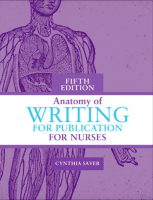The theme of the American Nurses Credentialing Center’s 11th National Magnet™ Nursing Conference held in October was “Connect, empower, celebrate.” The opening “Magnet Celebration” rivaled the most electrifying New Year’s Eve party, with confetti, horns, cheers, strutting, and screams of delight filling the massive convention hall as close to 5,000 registered nurses recognized organizations for their initial or redesignation achievement as Magnet institutions. Attendees from each organization being honored rose to nonstop applause.
The enthusiasm of celebration caught me by surprise. When was the last time you cheered for a colleague? Or applauded your own achievements, or those of a rival? When was the last time you were able to lose yourself in the excitement of the occasion? Or boast proudly of your team or organization? Nurses attending the conference showed unbridled pride in being part of a Magnet organization or in being on the Magnet journey.
They exuded passion, commitment, and the ability to have fun. I reflect on the fun because our work is so serious, and we often neglect to make the time to celebrate and have fun. In 1932, Erna D. Bunke described characteristics of nurses beyond “job skill, efficiency, poise, and technical knowledge.” She cited “shining eyes, a sense of humor, a joyous, wholesome, and thoroughly alive personality” as essential attributes of the very successful nurse. The former, she asserted, are acquired during professional education or training, while the latter are gained by mastering the art of “knowing how to live.” Bunke advised nurses to spend off-duty hours wisely, not only for fun but also for professional success.
The Magnet conference attendees certainly followed her advice. Amid the fun and celebration, the conference offered three informative plenary sessions, 125 concurrent sessions, and 100 posters to stimulate participants’ thinking about nursing practice innovation, creating a culture of excellence, improving patient outcomes, and other topics supporting the forces of magnetism. A unique characteristic of this conference was the penetration of staff nurses presenting to a diverse audience that included clinical nurses, educators, and chief nursing officers. Intense hallway conversations focused on bringing strategies home for immediate implementation.
Conference attendees also celebrated the past, when the 2006 Magnet Prize presentation shared the story of the landmark efforts of American Academy of Nursing researchers who authored the first study of Magnet hospitals. Drs. Margaret L. McClure and Muriel Poulin were on hand to talk of the challenges to completing the original research.
The Magnet Commission ensures that standards for achievement are high. In the coming year, it will unveil a new approach to assessing criteria for evidence of the forces of magnetism, with an emphasis on five elements: transformational leadership; structural empowerment; exemplary professional nursing practice; new knowledge, innovation, and improvement; and empirical quality outcomes. Through this trailblazing approach, the Commission will set a new pace for reforming our healthcare organizations.
Cynics who question the authenticity of Magnet recognition need only talk to a Magnet nurse who works diligently to use evidence to guide practice changes, or serves as a role model for leadership, or seeks individualized solutions to a patient’s or family’s unique and challenging situation. She will tell you it’s the draw to the commitment of excellence, participation in guiding her destiny, and ability to advocate for patients that fuels her passion for nursing. We celebrate these acts as we realize the impact of Magnet recognition. There’s a growing belief that as more organizations achieve recognition, creating and sustaining cultures encouraging excellence, we will improve patient outcomes. The effects not only will be realized by patients but also will influence nurse satisfaction and retention.The power of fun at this conference was that it combined the recognition of organizational achievement with the celebration of collective success. In the words of Erna Bunke, “It’s fun to watch, but any activity which we ourselves engage in yields far more joy than mere watching.”
Move from the sidelines to the action. Find a success to celebrate. Have a little fun.
Pamela F. Cipriano, PhD, RN, FAAN
Editor-in-Chief

















